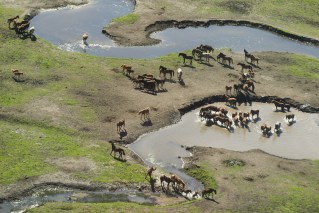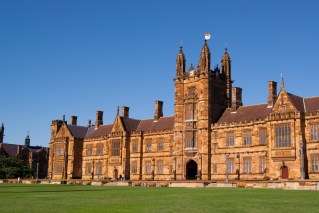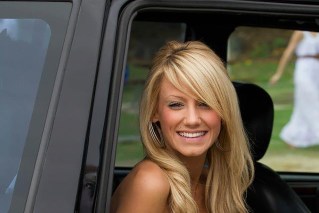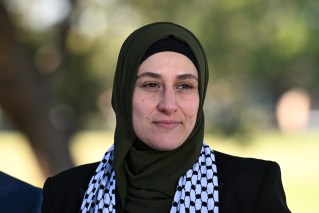She’d walk miles for a camel – and further to recruit gap year workers
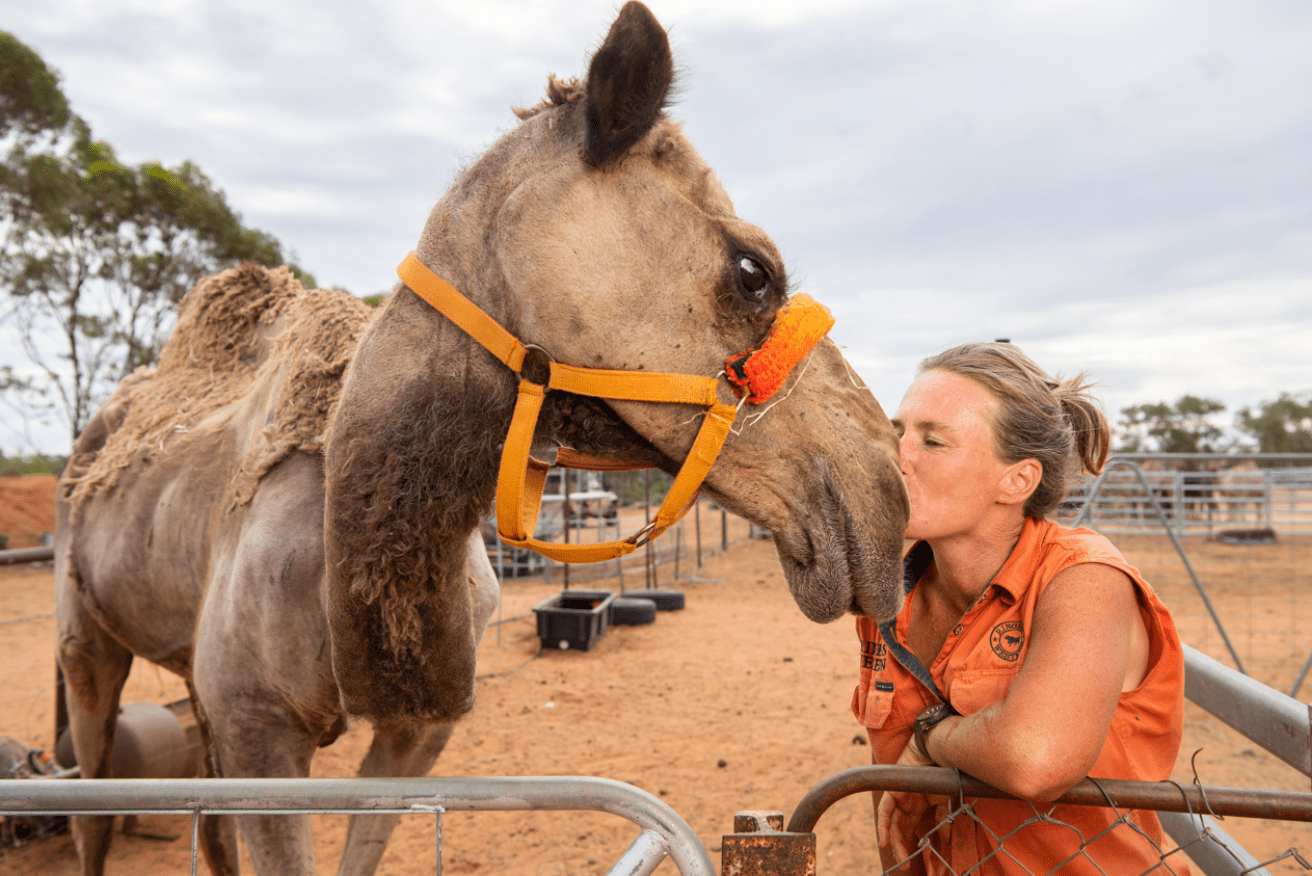
Petah Devine plants a smooch one of her beloved camels. Photo: AAP
On about 12 hectares of red dirt and scrub in outback NSW, Petah Devine is rounding up her camels for the night.
“C’mon Harold, c’mon Chocolate, c’mon Spencer,” she yells, repeating the call for a stubborn couple groaning in protest.
She’s about 11 hours into a stifling hot work day and has more to do yet, but takes a moment to pull the camels in for a good pet and a smooch.
Still bouncy with energy, she points out her other animals at her property at Silverton: three water buffalo – one that greets her with a big lick, seven donkeys, three ponies, four ostriches, 12 alpacas, about 40 goats, two deer and four pigs.
Then there’s the two emus, 12 sheep, six cats, chickens, ducks, guinea fowl, turkeys, peacocks, and 22 dogs including dingoes – all, living alongside her 18 camels.
Ms Devine can walk an average of 18km to 22km a day, and work from 6am until midnight when running her business, Silverton Outback Camels solo – something she would rather school leavers help her with.
“I love being on my own out here; I quite enjoy it, I like my space and I like just hanging out with the animals,” Ms Devine tells AAP.
“But yeah, it’s pretty hard – running out of time in the day to get everything done is the biggest problem.”
Ms Devine relies predominantly on backpackers to help run her camel ride business, given they make up most of her job applicants.
Advanced outback education
However, she wants more Australian school leavers to consider spending their gap year in the outback at tourist attractions like hers, boosting local economies and learning valuable skills – like patience and quick-thinking when an emu escapes, and adaptability in harsh weather.
Ms Devine – known locally as “the camel lady” – was a longtime police officer before she bought the Silverton farm in 2017 and ultimately left the force because of post-traumatic stress disorder.
She and her ex-husband, who no longer works at the farm, took over camel rides in the outback town after another local operator decided to stop running them.
“It’s like a little mini zoo but I don’t have the animals in a pen, so they’re all out and about,” Ms Devine says.
“You get to learn a lot of things and get a lot of good qualities to help you in life.”
Cost-of-living pressures are driving young people’s desire to earn money, so the option to work and travel is increasingly attractive, he says.
“The current cohort of school leavers are really seeing that beauty of staying local and those sorts of experiences,” Mr Stubley tells AAP.
Regional communities have a great opportunity to band together and seize on the marketability of the “gap year” concept, especially with tools like social media at their disposal.
‘That’s the secret sauce’
But not enough operators are doing it, he says.
“That’s the secret sauce of potentially some really interesting ways for regional and rural communities to advertise their employment opportunities,” Mr Stubley says.
“It’s really under-tapped.
“The appeal of a gap year and what that means in terms of an experience is the selling point, it’s not going there and working.”
A December survey by Year 13 found one in three Australian teenagers plan on taking a gap year.
At the height of the COVID-19 pandemic in 2020, about 15 per cent of Year 12 students said they would still take a gap year after graduating even though international travel was not an option.
-AAP

